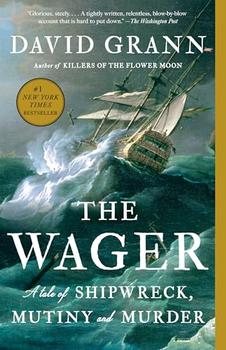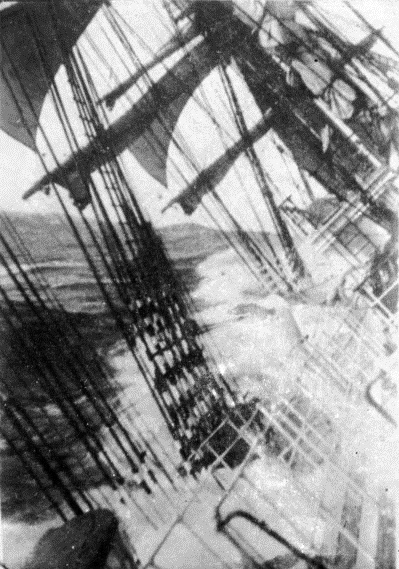Summary | Excerpt | Reading Guide | Reviews | Beyond the Book | Read-Alikes | Genres & Themes | Author Bio

A Tale of Shipwreck, Mutiny and Murder
by David GrannThis article relates to The Wager
 David Grann's The Wager is a nonfiction book about events surrounding the 1741 wreck of the British ship the HMS Wager, which met its doom while rounding Cape Horn, a rocky headland at the southernmost tip of the Chilean archipelago Tierra del Fuego, where the Pacific and Atlantic Oceans meet. With this book, Grann sheds light on one relatively little-known historical incident, but Cape Horn is infamous for shipwrecks. Its treacherous waters are estimated to have claimed more than 800 ships and 10,000 lives.
David Grann's The Wager is a nonfiction book about events surrounding the 1741 wreck of the British ship the HMS Wager, which met its doom while rounding Cape Horn, a rocky headland at the southernmost tip of the Chilean archipelago Tierra del Fuego, where the Pacific and Atlantic Oceans meet. With this book, Grann sheds light on one relatively little-known historical incident, but Cape Horn is infamous for shipwrecks. Its treacherous waters are estimated to have claimed more than 800 ships and 10,000 lives.
So why exactly is rounding Cape Horn so dangerous? One reason for this is a sharp rise in the ocean floor that occurs southwest of the cape. This rise, combined with strong winds caused by the area's southerly latitude (where air is pushed towards the pole by the Earth's rotation), results in particularly high waves occurring on a regular basis, the danger of which can be exacerbated by volatile weather. Rocky outcroppings and icebergs are additional hazards.
Cape Horn is named for the birthplace of the Dutch explorer Willem Schouten (Kaap Höorn), who is credited with the first navigation around the cape in 1616. The route Schouten took is known as the Drake Passage because it was previously encountered by the English explorer Sir Francis Drake — who did not actually pass through it, contrary to what the name might seem to suggest — in 1578. Once the Drake Passage was found to be navigable, it became a popular international route despite its danger, as it offered a convenient, freely passable alternative to the Strait of Magellan to the north. Schouten had been driven to find a different route in the first place because his company was in conflict with the Dutch East India Company, which controlled the Strait of Magellan at the time. The Drake Passage was soon the main way for ships to travel between Europe and East Asia, as well as from one side of the United States to the other.
The route's popularity continued through the 18th and 19th centuries but ended with the 1914 completion of the Panama Canal, which offered a safer, more direct passage through the Americas for ships traveling between these destinations. Today, Cape Horn is mostly a destination for tourists and nautical enthusiasts looking for a challenge — it is sometimes referred to as the sailor's equivalent of Mount Everest.
The Cape Horn of days past still looms large in the cultural imagination, thanks to numerous accounts of navigating it as well as its influence on writers, artists and others. Moby-Dick author Herman Melville was inspired by his experiences aboard whaling ships, including the Acushnet, which disembarked from Fairhaven, Massachusetts in 1840, bound for Cape Horn and the Pacific. The naturalist Charles Darwin wrote in his diary about how the ship that took him on an expedition around the world, the HMS Beagle, encountered bad weather near Cape Horn before Christmas in 1832: "Cape Horn, however, demanded his tribute, and before night sent us a gale of wind directly in our teeth. We stood out to sea, and on the second day again made the land, when we saw on our weather-bow this notorious promontory in its proper form—veiled in a mist, and its dim outline surrounded by a storm of wind and water."
Glass plate negative of view from a sailing ship during a storm at Cape Horn (between 1885 and 1954), via National Library of Australia
Filed under Places, Cultures & Identities
![]() This "beyond the book article" relates to The Wager. It originally ran in June 2023 and has been updated for the
February 2025 paperback edition.
Go to magazine.
This "beyond the book article" relates to The Wager. It originally ran in June 2023 and has been updated for the
February 2025 paperback edition.
Go to magazine.
Your guide toexceptional books
BookBrowse seeks out and recommends the best in contemporary fiction and nonfiction—books that not only engage and entertain but also deepen our understanding of ourselves and the world around us.